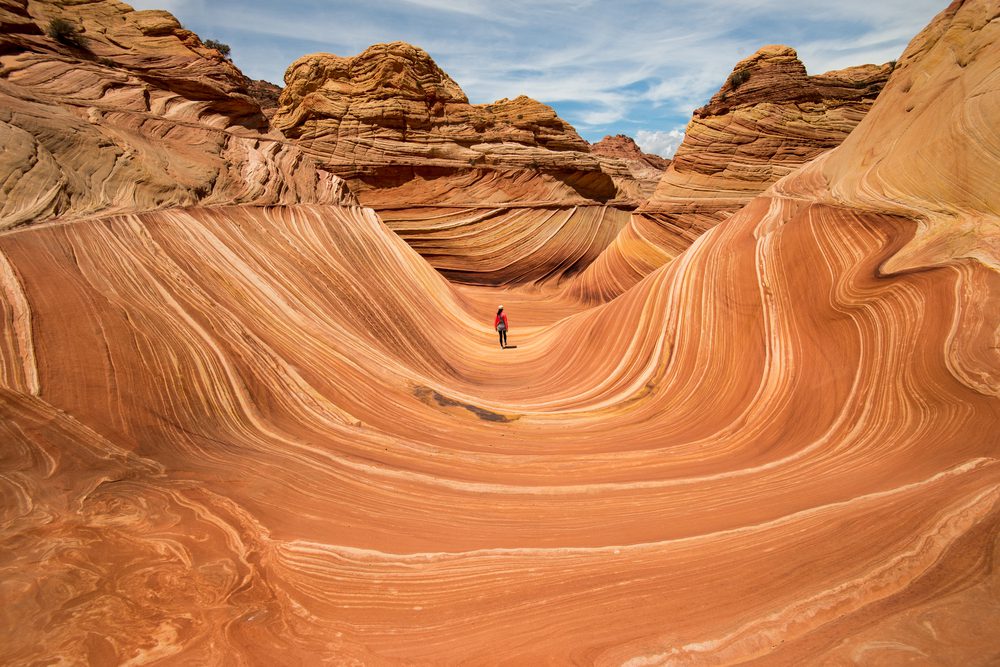Very few rock features in the world can compare to the Wave in Arizona. With its swirling layers and undulating forms, this trippy rock formation is not only an Instagrammable sight, but also a geological wonder that’s been 190 million years in the making.
The Wave can be found in the Coyote Buttes North area of the Colorado Plateau just along the border between Utah and Arizona.
It’s made of sandstone, which is relatively prone to erosion from water and wind over lengthy periods of time. Sandstone is a sedimentary rock that often features this distinctive striped effect when sliced through, created by the layers-upon-layers of deposits that have become compacted and cemented over time.
At an altitude of 1,593 meters (5,225 feet), the Wave consists of two main twisting troughs, one of which is 19 meters (62 feet) wide by 36 meters (118 feet) long and another that’s 2 meters (7 feet) wide by 16 meters (52 feet) long.
The Wave’s distinct swirling, striped patterns were produced by ancient geological forces that carved this area in the Jurassic era around 190 million years ago. Earth looked very different around the world: the planet’s tectonic plates were smooshed together into one giant supercontinent, Pangea, and dinosaurs roamed the land. Likewise, this part of the world was far wetter than it is today.
The Wave of Arizona with a human for scale. Image credit: Pung/Shutterstock.com
It started as a cluster of Navajo Sandstone dunes, but narrow trenches started to be dug out by streams of water that followed the path of least resistance. As the sandstorm slowly eroded away, the channels became wider and the streams of water grew strong.
Eventually, winds took over the show and finished the job, sculpting deep troughs that feature a stripey pattern thanks to their layered sedimentary geology.
The striped colors of the Wave’s sediment layers are products of the different minerals – such as calcium, manganese, and iron oxide – that were deposited over the millennia.
This sounds like an easy process, but it unfolded over a span of millions and millions of years.
A view of the Wave is highly sought after by hikers and photographers for obvious reasons. However, due to the precious nature of the geology, access is limited and people have to pick up a permit from the US Bureau of Land Management to visit.
Hundreds of people request permits daily, but the agency only allows 64 people per day. In 2018, it was estimated that over 200,000 people applied, but just 7,300 were awarded.
So if you ever catch this natural spectacle with your own eyes, consider yourself very lucky.
Source Link: The Wave Of Arizona Is A 190-Million-Year-Old Geological Masterpiece
